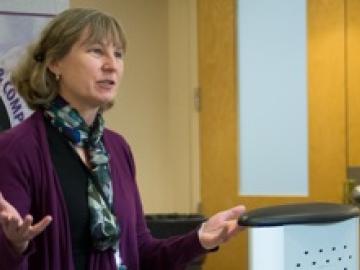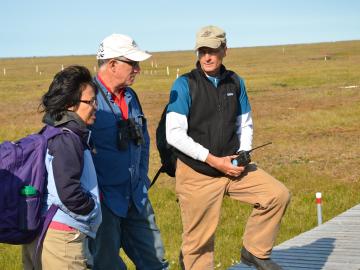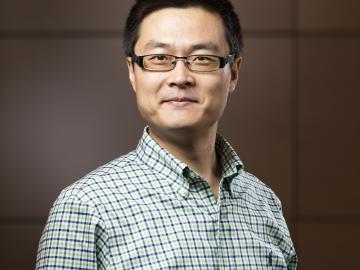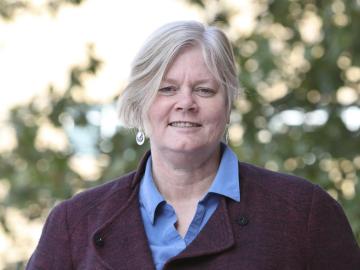
Filter News
Area of Research
- (-) Biology and Environment (177)
- (-) Materials for Computing (36)
- (-) Quantum information Science (9)
- Advanced Manufacturing (34)
- Biological Systems (18)
- Biology and Soft Matter (5)
- Building Technologies (12)
- Chemical and Engineering Materials (4)
- Chemistry and Physics at Interfaces (11)
- Clean Energy (522)
- Climate and Environmental Systems (14)
- Computational Biology (6)
- Computational Chemistry (5)
- Computational Engineering (5)
- Computer Science (19)
- Data (1)
- Earth Sciences (1)
- Electricity and Smart Grid (3)
- Energy Frontier Research Centers (14)
- Energy Sciences (5)
- Fossil Energy (3)
- Fuel Cycle Science and Technology (3)
- Functional Materials for Energy (16)
- Fusion and Fission (54)
- Fusion Energy (17)
- Geographic Information Science and Technology (3)
- Isotope Development and Production (3)
- Isotopes (35)
- Materials (433)
- Materials Characterization (2)
- Materials Synthesis from Atoms to Systems (13)
- Materials Under Extremes (12)
- Mathematics (1)
- National Security (79)
- Neutron Data Analysis and Visualization (4)
- Neutron Science (190)
- Nuclear Science and Technology (74)
- Nuclear Systems Modeling, Simulation and Validation (3)
- Nuclear Systems Technology (1)
- Quantum Condensed Matter (4)
- Reactor Technology (1)
- Renewable Energy (4)
- Sensors and Controls (5)
- Supercomputing (311)
- Transportation Systems (11)
News Topics
- 3-D Printing/Advanced Manufacturing (15)
- Advanced Reactors (1)
- Artificial Intelligence (9)
- Big Data (9)
- Bioenergy (46)
- Biology (73)
- Biomedical (18)
- Biotechnology (13)
- Buildings (2)
- Chemical Sciences (15)
- Clean Water (11)
- Climate Change (40)
- Composites (6)
- Computer Science (31)
- Coronavirus (16)
- Critical Materials (1)
- Cybersecurity (3)
- Decarbonization (19)
- Energy Storage (11)
- Environment (90)
- Exascale Computing (4)
- Frontier (3)
- Fusion (1)
- Grid (4)
- High-Performance Computing (20)
- Hydropower (8)
- Isotopes (3)
- Machine Learning (8)
- Materials (22)
- Materials Science (21)
- Mathematics (3)
- Mercury (7)
- Microscopy (16)
- Molten Salt (1)
- Nanotechnology (15)
- National Security (4)
- Net Zero (2)
- Neutron Science (9)
- Nuclear Energy (1)
- Partnerships (5)
- Physics (3)
- Polymers (8)
- Quantum Computing (1)
- Quantum Science (12)
- Renewable Energy (1)
- Security (3)
- Simulation (14)
- Space Exploration (1)
- Summit (11)
- Sustainable Energy (35)
- Transformational Challenge Reactor (1)
- Transportation (8)
Media Contacts

Ecologist Virginia Dale is an ORNL corporate fellow and director of the lab’s Center for BioEnergy Sustainability. In her work she focuses on environmental decision making, plant succession, land-use change, landscape ecology, ecological modeling, sustainability, and bioenergy systems. Dale...

Stan Wullschleger did not intend to stay so long at Oak Ridge National Laboratory, but as many other scientists can relate, time flies when you’re engaged in interesting work. “I don’t know if you can tell while it’s happening or you just notice it in hindsight, but the lab is a wonderful place t...

CCSI scientist Jiafu Mao, of the Terrestrial Systems Modeling group in the Environmental Sciences Division, parlayed his interest in physics and mathematics as a student in China into a field of study he has always found interesting

At the confluence of energy and ecology is where Henriette “Yetta” Jager has found her calling. A senior scientist in the Environmental Sciences Division, Yetta uses models to look for win-win opportunities to produce more energy without harming fish and wildlife. Yetta’s research for the US D...





The American Conference on Neutron Scattering returned to Knoxville this week, 12 years after its inaugural meeting there in 2002.

Photovoltaic spray paint could coat the windows and walls of the future if scientists are successful in developing low-cost, flexible solar cells based on organic polymers. Scientists at the Department of Energy’s Oak Ridge National Laboratory recently discovered an unanticipated factor in the performance of polymer-based solar devices that gives new insight on how these materials form and function.


